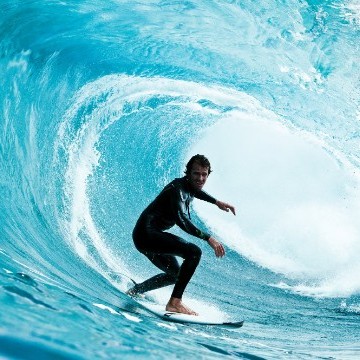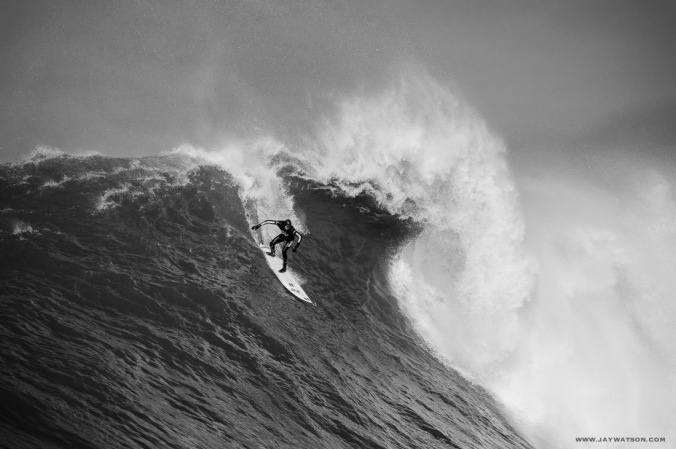Surfing Gear + Equipment
Surfing gear and equipment has expanded dramatically over the past 50 years. Some examples of this are Wax. Wax was introduced to add a high-traction layer on the surfboard to create friction between the surfers feet and board. This layer helps the rider stay on the board, wax needs to be re-applied as the wax can gradually wash away over time.
Some clothing that has become an icon for surfing is board shorts, rash vests and wet suits. Rash vests are shirts that help prevent scrapes, injuries and also offer protection from the sun. Wet suits were designed to allow surfers to stay warm in colder water. This meant that surfing could become an all year round sport, increasing the training.
Another significant piece of equipment is the leash. This connects to the board and is attached to the surfers ankle to help the from losing the board while surfing.
Surfing Conditions + Techniques
Over time, surfers have discovered new technologies which have indirectly improved their techniques. The Conditions of the waves and location of where you surf can determine and enhance your ability to surf. Hawaii is renowned for the worlds biggest waves, this destination can dictate your surfing career. Many have tried to artificially reconstruct waves by using machines. However these do not exactly replicate real waves, this means to surf you need to be in the right location.
One technique which has improved with these technologies is the paddling out to the surf. With the lighter boards and wetsuits we have increased the efficiency of surfers. This means that the surfers are not so tired from paddling out with a heavy board, or aren’t as cold when training in the winter season.
Technology
The Go Pro camera has increased high-skilled surfers ability to improve their performance. The Go Pro enables the surfer to film themselves surfing, then to watch it back. This helps their coach to identify weaknesses in their surf, as they’re not out there with them.
Surfboard
One way surfing has technologically developed is the surf board. Surfing has not changed much in the way of the surfer’s riding technique, but more so in the equipment used. The surfboard design has changed over time, by incorporating each era’s materials, ideas and more recently technology. Previously to the 20th century, the surfboard design was relatively natural and in a raw state. Surfboards were made out of thick, solid wood and weighed more than the surfer. As they were made out of wood, they would be sanded to keep them as smooth and water resistant as possible. Today, they’re made of water-resistant, light fiberglass, polymers and other synthetic chemicals. However a lot has evolved during this time.
Pre 1950’s
During this period of time surfboards were still made out of wood, particularly the redwood trees. Although there was a problem with this material as is wasn’t particularly waterproof. The longer the board spent in the water, the heavier it became and was found to be difficult to control the board. Designers eventually figured out that more aerodynamic surfing came with a board that was light and water repellent
1950s and 1960s
One lasting development in the surfboard design occurred during this era, which was the use of fiberglass and polyurethane foam. The board was much lighter now, making boards easier to control. Foam was a selling point as the light material allowed shaping and cutting to be more efficient. This meant hardwoods were being replaced. Another contributing development into surfing today is the length of the board. it was found that long boards were difficult to maneuver over waves and during the 1960’s short boards were introduced. Short boards gave the surfer more leniency to perform tricks on the waves. These improvements are still being used in the surfing industry today.
1970s and 1980s
One of the most simple alteration was the leg rope. The leg rope was attached to the board as well as the surfers ankle. This was designed for when the surfer was wiped out, they wouldn’t need to chase the board down or wait for it. An Australian Surfer Simon Anderson created the three-fin surfboard. This design was to provide stability and friction while surfing waves.
1990s
One of the more recent improvements was the rail curve. The rail curve is the shape of the underside of the board, different rail curves differentiate depending on the surfers ability. For example, a straight-cu rail allows for faster turning, a softer, curved rail slows down the turns and is better for beginners. The underside shape can also determine and redirect water flow. There are now many different styles of surfboards, for example the fish board, mini malibu, longboard and short board.






